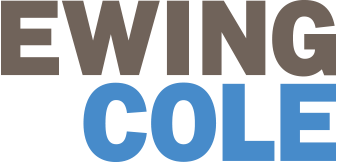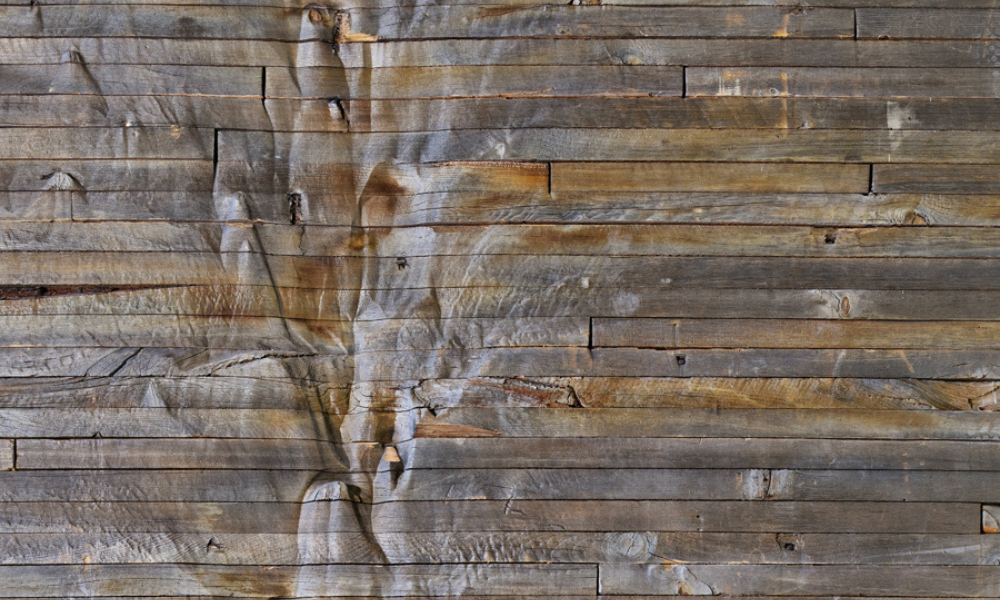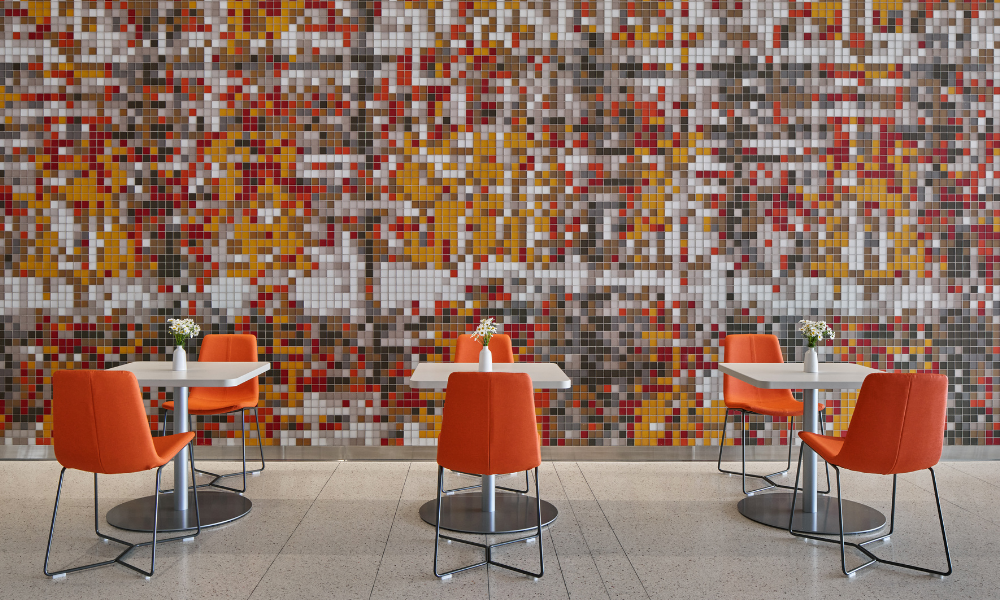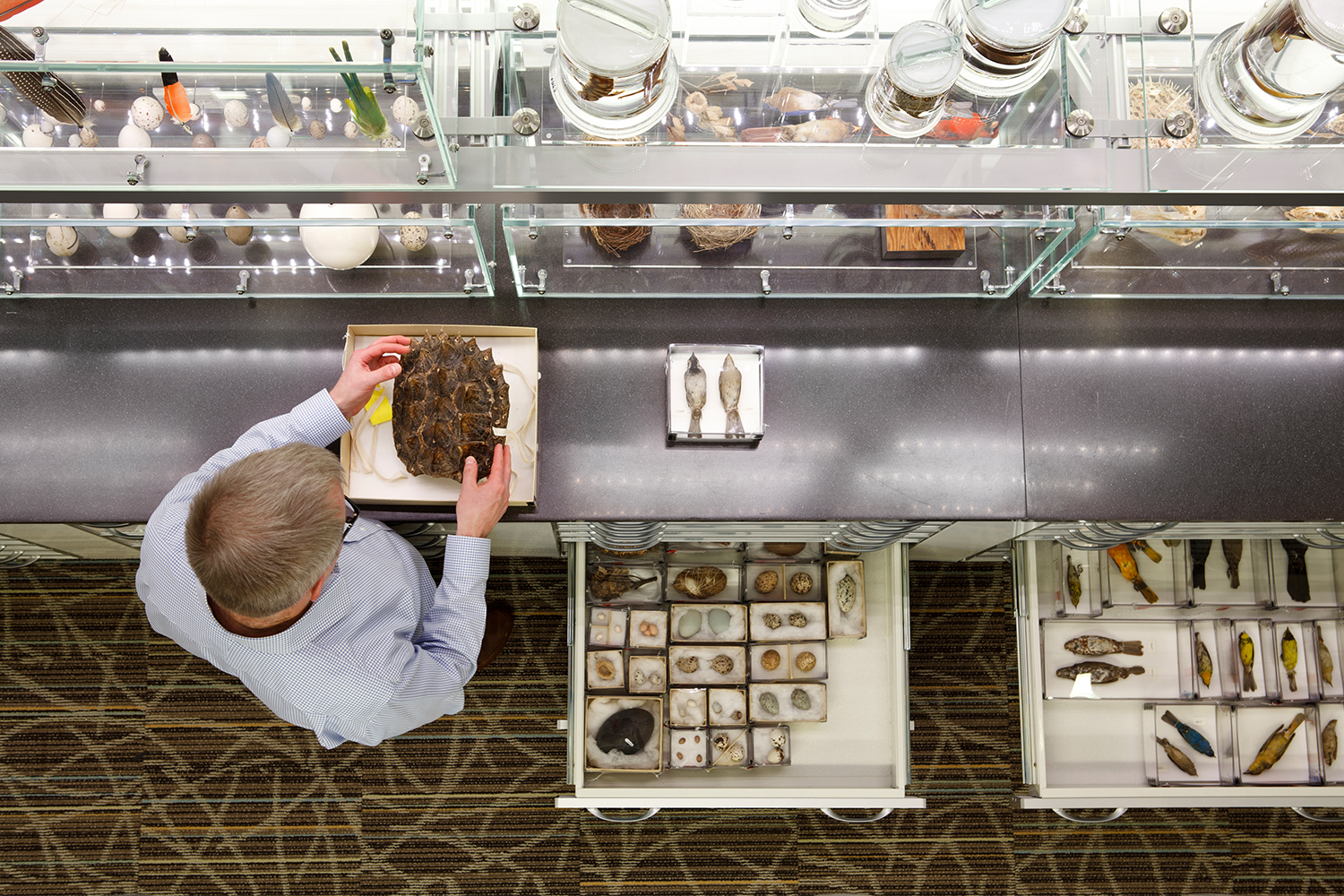
Hands-On Learning: How Museum Exhibits are Reaching Out to Patrons
Tactilely connecting visitors directly to collections is a powerful educational strategy. Removing barriers and allowing people to touch and experience an object leaves a lasting impression that simply reading about it behind glass cannot provide.
 “Please do not touch the exhibits” almost seems like a challenge rather than a direct request for anyone – most notably children – visiting a museum and faced with objects or specimens we don’t see daily. It’s this temptation that museums are now drawing on to enhance educational experiences between patrons and collections. When encouraged to get more up close to the museum goings-on, visitors can establish a meaningful connection to a valuable learning experience.
“Please do not touch the exhibits” almost seems like a challenge rather than a direct request for anyone – most notably children – visiting a museum and faced with objects or specimens we don’t see daily. It’s this temptation that museums are now drawing on to enhance educational experiences between patrons and collections. When encouraged to get more up close to the museum goings-on, visitors can establish a meaningful connection to a valuable learning experience.
This was the key objective behind the Smithsonian’s National Museum of Natural History’s Q?rius gallery, which opened in 2014. Using a robust handling collection, the museum sought to give visitors an all-access experience. Facilitating these moments required experimentation through trial and error over the years, and having a flexible, easily modifiable space allowed the museum to adapt to new ideas.
Designers explored several ways to increase interaction between guests and the objects in the collection. Each idea, such as the “Collections Café” concept, moved away from traditional museum models and presented a new compelling way to engage visitors and promote the citizen scientist experience. As ideas progressed, the design team realized the need to provide for different experiences over time.
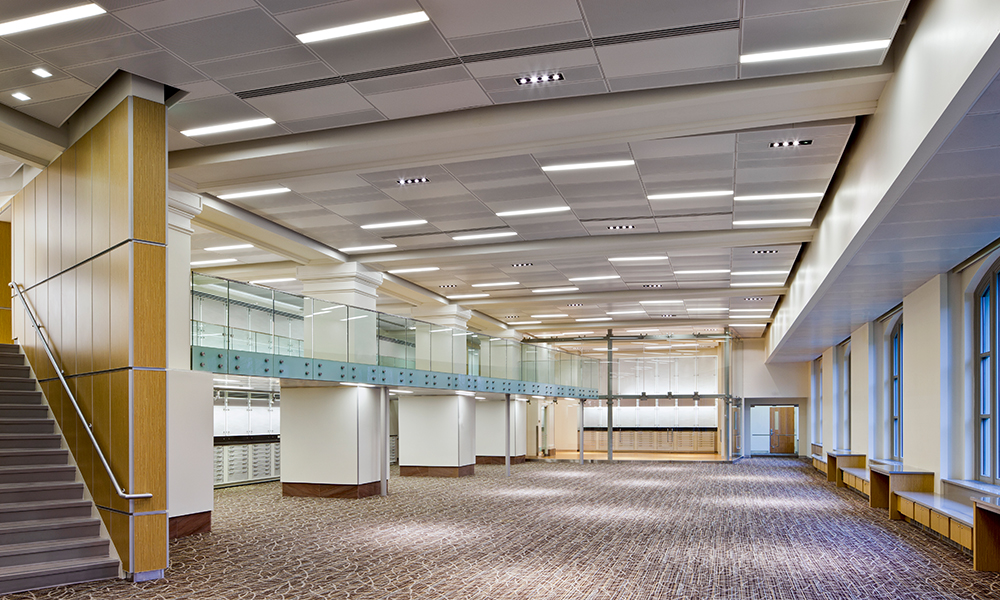
The solution was an open and flexible concept that could easily accommodate constant reconfiguration to meet the needs of the museum over time. However, by creating a space with infinite flexibility, the design team needed to ensure they weren’t sacrificing a strong sense of place. Total flexibility may run the risk of the space becoming open and generic. Finding the balance was critical.
Behind the Scenes Access
Key to the success of the design was the creation of the brightly illuminated Collections Wall. This fixed, permanent element within the space organizes it and orients the visitor. The Wall is a visual representation of the collections housed behind the scenes at the museum. Its base is comprised of collections cabinets filled with objects in Q?rius’ handling collection. Visitors are encouraged to open drawers, remove objects, and take them to adjacent spaces for unique, often self-driven, educational experiences.
While an important element in the space, the Collections Wall does not overpower it. Most of the Q?rius hall is open with large north-facing windows that allow in ample natural light while providing an important visual connection to the outdoors. Modular furniture and a regular power and data grid located in the floor provide an easy plug-and-play setup with endless configurations.
This ability to adapt to ever-changing needs made Q?rius a success, even allowing it to serve a different audience than it initially planned for.
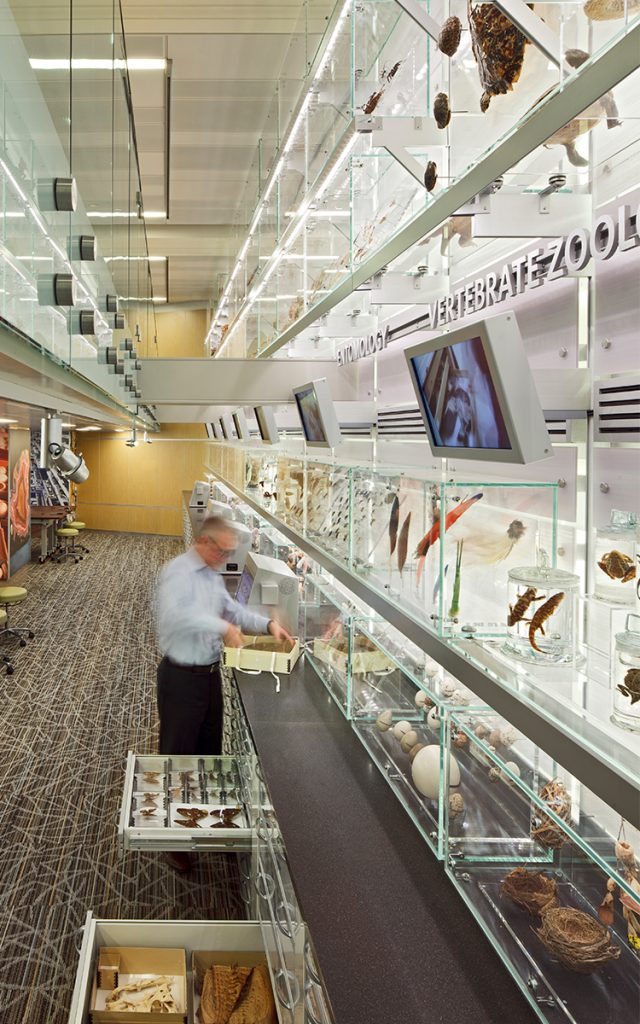
Focus on Family Time
The space was originally designed for tweens and teens, but the focus shifted to families who more readily engaged with the exhibit for longer periods. Immersive, small-group activities held their attention and engagement longer. Visitor feedback shows that the longer a person spends in the space, the more they enjoy their experience, and the more likely they are to return. Q?rius has some of the longest visitor stay times among all the museum’s programs. This led the museum to tweak other experiences to encourage patrons to stay longer. This easy fine-tuning allows the space to remain current and provides educators the opportunity to experiment with new programs and delivery methods.
Exhibits Under the Microscope
Another key goal of Q?rius is to facilitate direct contact between visitors and scientists. While these experiences are invaluable to visitors, especially younger ones, they are often difficult to authentically provide. To foster engagement, the museum provides microscope workstations within the space to draw scientists from around the museum to work. These microscopes, often more powerful than those behind the scenes, put science on display, and spark spontaneous, unscripted interactions through person-to-person interaction. When not used by scientists, the microscope stations can be used by the public with guidance from Q?rius staff in conjunction with artifacts from the Collection Wall, which has remained a focus element in the space over the years.
The space is also now used to host events. The flexible concept allowed for reconfiguration to meet various individual and small group needs. Visitors can experience a tribal ceremony, for example, then come back to the space to learn more about the ceremony itself, artifacts used in the ceremony, or any aspect that interests them most, all in the same space.
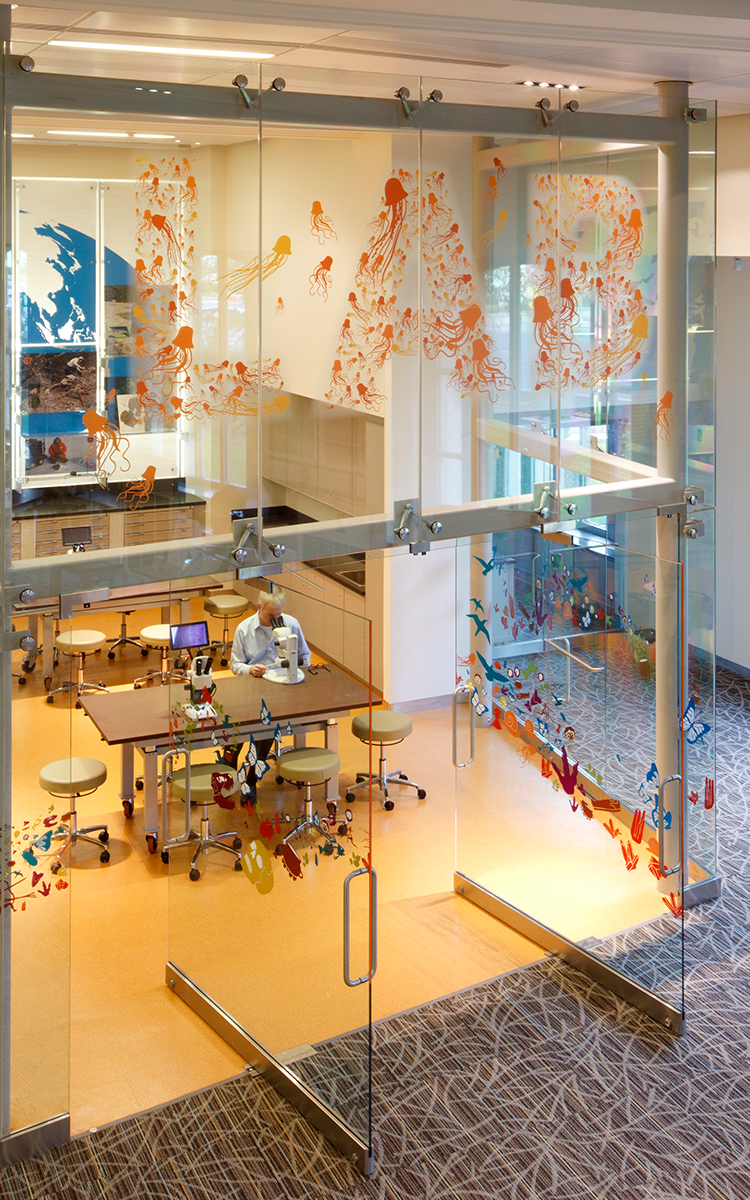
The visitors to artifact connection remains constant in the evolution of Q?rius. The value in holding and touching natural history collections is immeasurable to patrons of a natural history museum. Texture, weight, and smell of an object is a form of active learning that cannot be substituted by reading a book or smartphone screen. In our increasingly digital world, in-person, hands-on experiences are more important than ever, connecting people to objects and more importantly people to people.
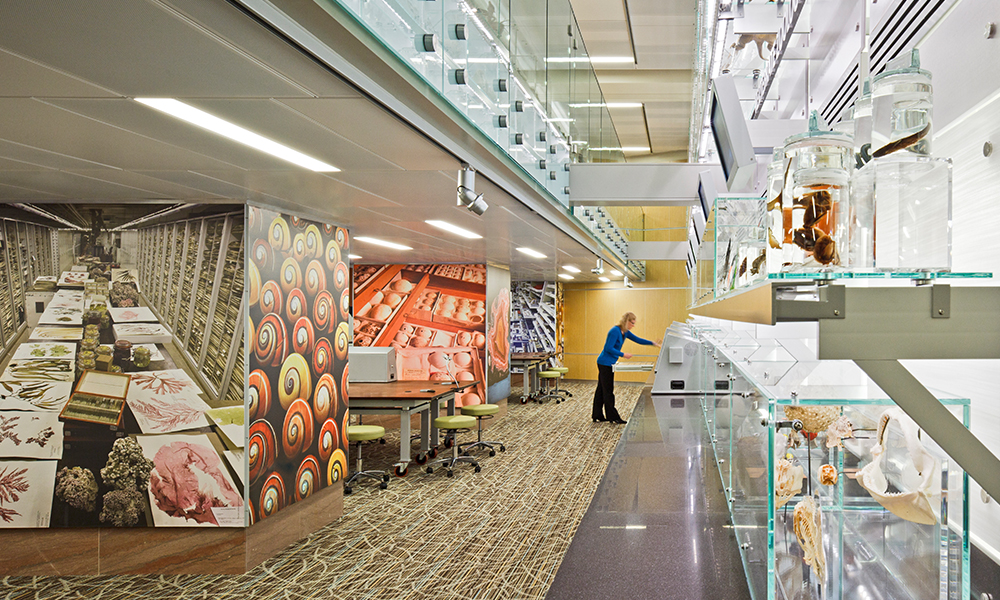
The Future of Q?rius
COVID-19 poses great challenges for the future of handling collections and the spaces that support them. For most of 2020 Q?rius and the rest of the National Museum of Natural History was closed. When it reopens, it will no doubt look different than before. Soft-reopening and safety measures may include:
- Limited occupancy
- Demonstrations behind glass
- Visitor handling of cleanable objects only
- Expanded online/digital content offerings
- One-way circulation around the space
At its core, Q?rius was designed to adapt. Flexibility and adaptability is baked into the design. Its functionality will allow it to reopen and remain a unique experience while keeping patrons and staff safe. Creativity and patience will go a long way in the early months of 2021 as the slow return to normalcy takes root. Until then, Q?rius, much like its collections, waits to be rediscovered.
